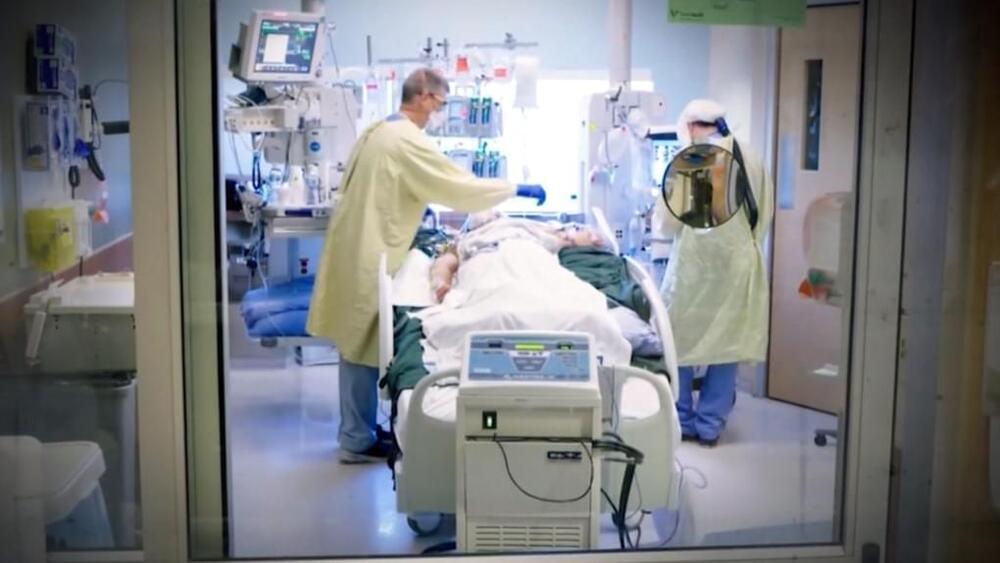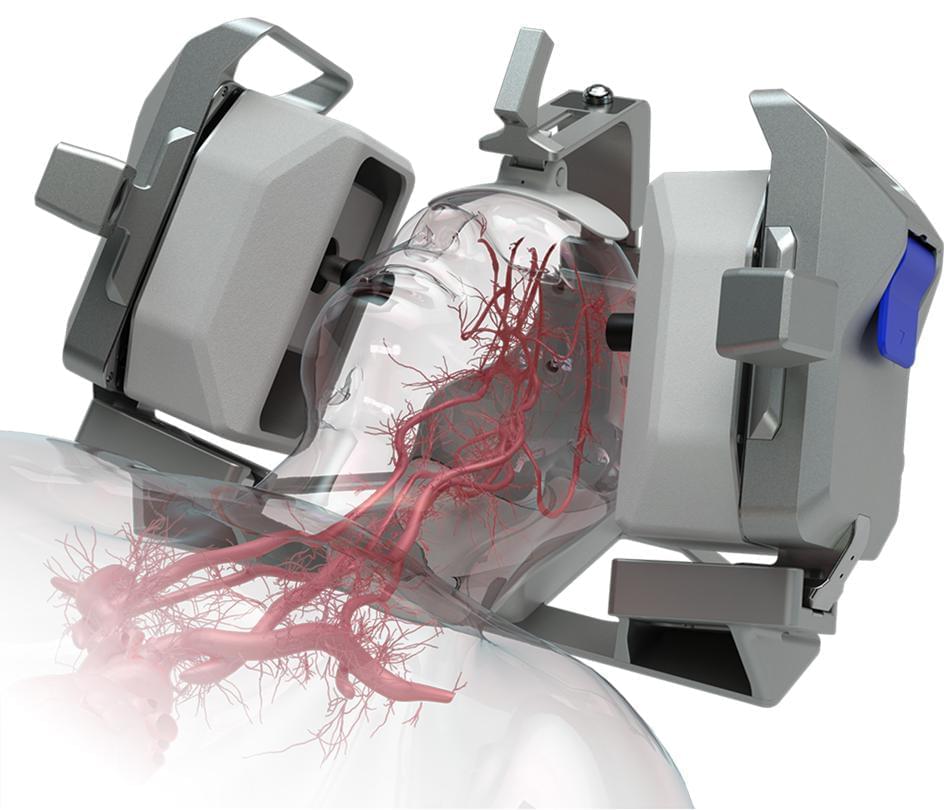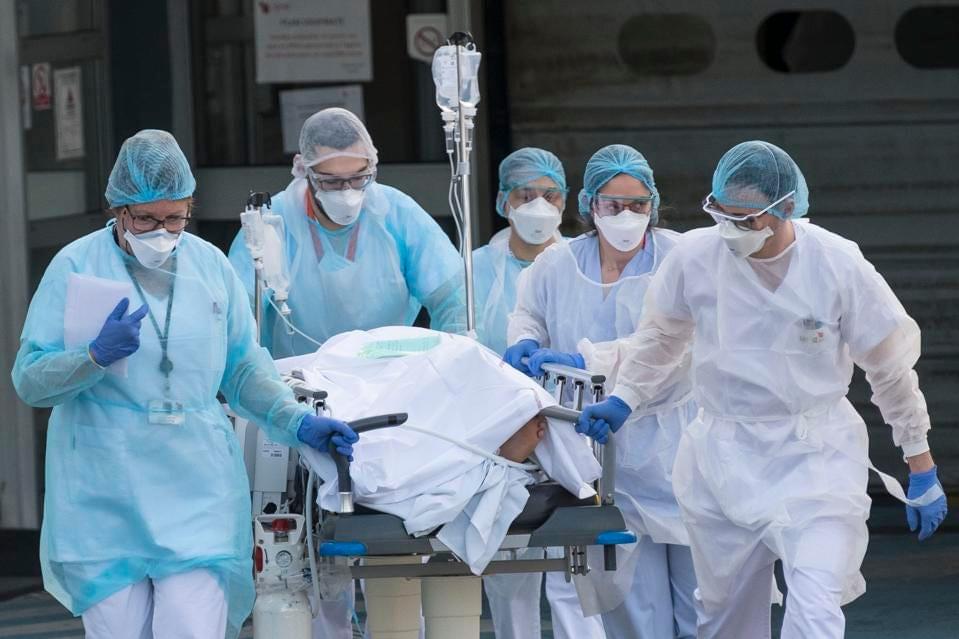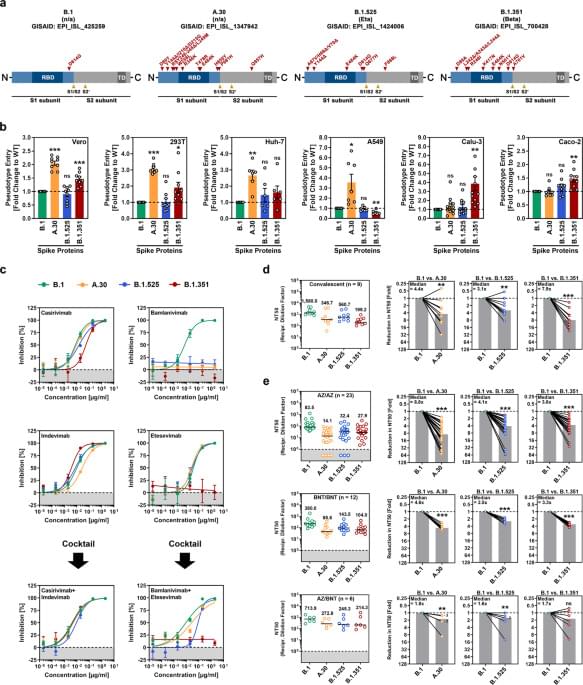Saturday on W5: experts warn the next pandemic could come sooner than you think, and that unless changes are made to industrial farming practices worldwide, it could spark a virus more deadly than COVID-19.



𝙈𝙍𝙄 𝙖𝙣𝙙 𝙐𝙡𝙩𝙧𝙖𝙨𝙤𝙪𝙣𝙙 𝘾𝙖𝙣 𝙎𝙣𝙚𝙖𝙠 𝘾𝙖𝙣𝙘𝙚𝙧 𝘿𝙧𝙪𝙜𝙨 𝙞𝙣𝙩𝙤 𝙩𝙝𝙚 𝘽𝙧𝙖𝙞𝙣 𝙍𝙚𝙨𝙚𝙖𝙧𝙘𝙝𝙚𝙧𝙨 𝙝𝙖𝙫𝙚 𝙙𝙚𝙫𝙚𝙡𝙤𝙥𝙚𝙙 𝙖 𝙩𝙚𝙘𝙝𝙣𝙞𝙦𝙪𝙚 𝙩𝙤 𝙜𝙚𝙩 𝙩𝙧𝙚𝙖𝙩𝙢𝙚𝙣𝙩𝙨 𝙩𝙝𝙧𝙤𝙪𝙜𝙝 𝙩𝙝𝙚 𝙥𝙧𝙤𝙩𝙚𝙘𝙩𝙞𝙫𝙚 𝙗𝙡𝙤𝙤𝙙-𝙗𝙧𝙖𝙞𝙣 𝙗𝙖𝙧𝙧𝙞𝙚𝙧
𝐈𝐧 𝐚 𝐧𝐞𝐰 𝐬𝐭𝐮𝐝𝐲, 𝐫𝐞𝐬𝐞𝐚𝐫𝐜𝐡𝐞𝐫𝐬 t𝐞𝐦𝐩𝐨𝐫𝐚𝐫𝐢𝐥𝐲 𝐦𝐚𝐝𝐞 𝐭𝐡𝐞 𝐛𝐥𝐨𝐨𝐝-𝐛𝐫𝐚𝐢𝐧 𝐦𝐨𝐫𝐞 𝐩𝐞𝐫𝐦𝐞𝐚𝐛𝐥𝐞, 𝐚𝐥𝐥𝐨𝐰𝐢𝐧𝐠 𝐚 𝐦𝐨𝐧𝐨𝐜𝐥𝐨𝐧𝐚𝐥 𝐚𝐧𝐭𝐢𝐛𝐨𝐝𝐲 𝐭𝐨 𝐭𝐚𝐫𝐠𝐞𝐭 𝐜𝐚𝐧𝐜𝐞𝐫 𝐭𝐡𝐚𝐭 𝐡𝐚𝐝 𝐬𝐩𝐫𝐞𝐚𝐝 𝐭𝐨 𝐭𝐡𝐞 𝐛𝐫𝐚𝐢𝐧.
A new way to usher treatments through the protective blood-brain barrier.
This videoclip is an excerpt of a movie produced by CGTN America entitled “Gene Therapies and the Promise of the Fountain of Youth” which was released in January 2021.
He añadido S/T en Español.

Los Angeles-based NovaSignal Inc. recently launched the second version of their artificial intelligence (AI)-a guided robotic platform for assessing cerebral blood flow in order to guide real-time diagnosis. The platform uses ultrasound to autonomously capture blood flow data, which then gets sent to their HIPAA-compliant cloud system so that clinicians can access the exam data from anywhere on their personal devices.
Founded in 2,013 the company states they have raised over… See more.
Los Angeles based NovaSignal Inc. recently launched a second version of their artificial intelligence (AI)-guided robotic platform for assessing cerebral blood flow in order to guide real-time diagnosis. The platform uses ultrasound to autonomously capture blood flow data, which then gets sent to their HIPAA-compliant cloud system so that clinicians can access the exam data from anywhere on their personal devices.
Founded in 2,013 the company states they have raised over $25 million in federal research funding and hold 18 patents. They also have over 130 peer-reviewed citations to their work. NovaSignal’s products are FDA-cleared in the United States, CE-marked in Europe, and licensed in Canada.

A “perfect storm” of several crises, such as climate change and the Covid-19 pandemic, mean many nations are “knocking on famine’s door,” Beasley said.
A small group of ultra-wealthy individuals could help solve world hunger with just a fraction of their net worth, says the director of the United Nations’ World Food Programme.
Billionaires need to “step up now, on a one-time basis”, said David Beasley in an interview on CNN’s Connect the World with Becky Anderson that aired Tuesday — citing specifically the world’s two richest men, Jeff Bezos and Elon Musk.
“$6 billion to help 42 million people that are literally going to die if we don’t reach them. It’s not complicated,” he added.

😀
As someone who rides, reviews, and covers news on electric motorcycles, I hear the same thing all the time: “I’d love an electric motorcycle, but they’re all so expensive. Maybe when prices come down.”
And I get it. Electric motorcycles really are expensive. Zero’s flagship electric motorcycles cost $20,000. LiveWires are a couple thousand more. And Energicas are a couple thousand more than that. But somehow a little-known, highway-capable electric motorcycle popped up in North America for just US $5,990, and it seems like no one noticed. I’m talking about the Kollter ES1 electric motorcycle.
We’ve been discussing a potential impending influx of affordable electric motorcycles from Asia for several years now. However, the COVID-19 pandemic created a significant delay in the rollout of several of those anticipated Asian models.

An international team of researchers wants to find people who are genetically resistant to SARS-CoV-2, in the hope of developing new drugs and treatments.
Imagine being born naturally resistant to SARS-CoV-2, and never having to worry about contracting COVID-19 or spreading the virus. If you have this superpower, researchers want to meet you, to enrol you in their study.
As described in a paper in Nature Immunology1 this month, an international team of scientists has launched a global hunt for people who are genetically resistant to infection with the pandemic virus. The team hopes that identifying the genes protecting these individuals could lead to the development of virus-blocking drugs that not only protect people from COVID-19, but also prevent them from passing on the infection.
“It’s a terrific idea,” says Mary Carrington, an immunogeneticist at the Frederick National Laboratory for Cancer Research in Bethesda, Maryland. “Really, a wise thing to do.”

Like weather forecasting, disease forecasting needs to be statistical.
While we cannot predict in advance exactly how many hurricanes will occur this year or how bad they will be, we know with great confidence that climate change is a risk factor increasing the frequency and severity of hurricanes. Our knowledge of this and all the other risk factors for hurricanes allows us to make a statistical prediction for the coming season.
Similarly, we have known for decades that ther… See more.
I’ve written before about the need for infectious disease intelligence and whether or not we can insure against damages from future outbreaks. Both ideas assume that epidemics can, to some extent, be predicted. But can they?
The lack of control and idiosyncrasies of the current Covid-19 pandemic (like multiple “waves” of transmission), might cause some to wonder if predicting epidemics is a lost cause. A comparison of the performance of 27 individual models made by many of the best academic scientists showed high high variability in forecast skill across time, geospatial units, and forecast horizons. Only just more than half of the models evaluated showed better accuracy than simply assuming the number of cases per week will stay the same for the next 4 weeks.

There is no cure for the disease, for which Alzheimer’s is the most common form (about 75% of dementia cases).
But finding out what raises the risk can help people try and prevent it.
A new study has offered more clues about the type of people who typically get Alzheimer’s.

The COVID-19 pandemic, caused by SARS-CoV-2, continues to rage in many countries, straining health systems and economies. Vaccines protect against severe disease and death and are considered central to ending the pandemic. COVID-19 vaccines (and SARS-CoV-2 infection) elicit antibodies that are directed against the viral spike (S) protein and neutralize the virus. However, the emergence of SARS-CoV-2 variants with S protein mutations that confer resistance to neutralization might compromise vaccine efficacy[1]. Furthermore, emerging viral variants with enhanced transmissibility, likely due to altered virus-host cell interactions, might rapidly spread globally. Therefore, it is important to investigate whether emerging SARS-CoV-2 variants exhibit altered host cell interactions and resistance against antibody-mediated neutralization.